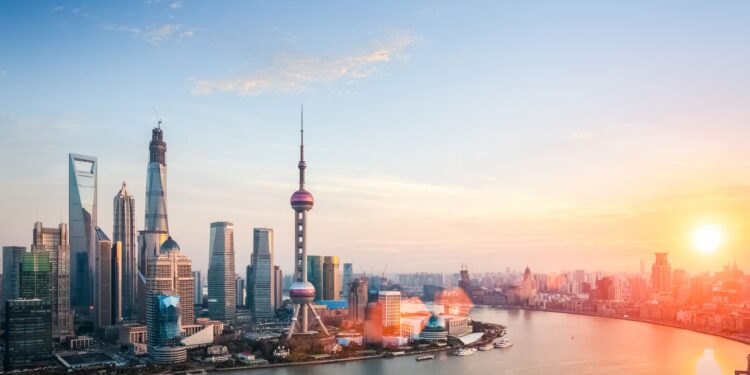China, with its awe-inspiring landscapes, rich history, and bustling cities, has served as an enchanting backdrop for numerous high-profile films. Its diverse locations, ranging from the bustling streets of Shanghai to the tranquil beauty of Zhangjiajie National Forest Park, have been immortalized on the silver screen. As an ardent film enthusiast, I invite you to join me on a cinematic journey through China, exploring filming locations, popular TV shows, animated films, and renowned books set in this captivating country.
A Glimpse into 10 Famous Films Shot in China
The charm of China’s diverse landscapes and cultural richness has lured filmmakers worldwide, offering a unique blend of urban modernity and natural grandeur. Let’s delve into ten renowned movies shot in China:
- Crouching Tiger, Hidden Dragon (2000) – Ang Lee’s Oscar-winning martial arts drama showcases the ethereal beauty of China’s landscapes, including the Hengdian World Studios and the Anji Bamboo Forest in Zhejiang.
- Mulan (2020) – This live-action Disney adaptation of the legendary Chinese warrior, Mulan, features stunning locations such as Xiangyang’s Tuyugou Valley and the Imperial City in Beijing.
- Transformers: Age of Extinction (2014) – The film’s thrilling action sequences set against the iconic skyline of Hong Kong and the Great Wall in Beijing accentuate the city-country’s modernity and ancient heritage.
- The Painted Veil (2006) – This romantic drama, set in 1920s China, captures the picturesque landscapes of Huangyao Ancient Town in Guangxi and the majestic peaks of The Stone Forest in Yunnan.
- Hero (2002) – Zhang Yimou’s visually stunning martial arts film features breathtaking scenes shot in locations such as the turquoise lakes of Jiuzhaigou Valley and the Gobi Desert in Dunhuang.
- Mission Impossible III (2006) – Tom Cruise’s thrilling exploits take him to Shanghai, with high-octane chase scenes filmed in the city’s vibrant streets and along the Bund.
- Skyfall (2012) – The 23rd James Bond movie features intense action sequences in Shanghai’s skyscraper district and the neon-lit streets, highlighting the city’s futuristic skyline.
- Looper (2012) – This sci-fi thriller uses Shanghai’s unique blend of traditional and ultra-modern architecture to represent a dystopian future.
- The Karate Kid (2010) – The film showcases iconic locations like the Great Wall, the Forbidden City, and Wudang Mountain, offering viewers a comprehensive tour of China’s cultural heritage.
- House of Flying Daggers (2004) – The film’s mesmerizing action sequences are set against the backdrop of Ukraine’s Carpathian Mountains and China’s Fenghuang County, showcasing a blend of natural beauty and historical architecture.
From epic martial arts dramas to high-stakes action thrillers, these films provide a captivating window into China’s multifaceted landscapes and cityscapes, offering viewers a taste of the country’s unique cultural and natural allure.
5 TV Shows Set in China to Watch
China’s rich culture and history have also found representation in numerous TV shows. Here are five series that beautifully capture the essence of Chinese life:
- “Love Me If You Dare” (2015) – This gripping crime drama series, set in modern-day Beijing, showcases the city’s contemporary lifestyle and architecture.
- “The Story of Yanxi Palace” (2018) – This historical drama, filmed at Hengdian World Studios, transports viewers to the opulent world of the Qing Dynasty’s Forbidden City.
- “Disguiser” (2015) – Set in 1940s Shanghai, this series captures the city’s architecture and lifestyle during this tumultuous period of history.
- “Ode to Joy” (2016) – This contemporary drama series depicts the lives of five women residing in Shanghai, offering a glimpse into the city’s modern urban life.
- “Journey to the West” (1986) – One of China’s most loved TV shows, it brings to life the iconic novel, featuring locations like the Qiyun Mountain in Anhui and the Yandang Mountains in Zhejiang.
These series offer an insightful look into China’s past and present, highlighting its diverse cultural landscape and historical richness.
5 Animated Films Set in China
China’s vibrant culture and history have also served as the backdrop for several animated films. Here are five animated films that bring to life the spirit of China:
- “Kung Fu Panda” series (2008-2016) – While primarily set in a fictional ancient China, these animated films from DreamWorks draw inspiration from various Chinese landscapes and architectural styles.
- “Mulan” (1998) – This Disney classic showcases a stylized ancient China, drawing on cultural elements and historical landmarks.
- “Big Fish & Begonia” (2016) – This visually stunning film offers a unique interpretation of Chinese mythology, with a distinct Chinese aesthetic.
- “Ne Zha” (2019) – This epic fantasy animation, based on Chinese mythology, features a vibrant and imaginative portrayal of ancient China.
- “White Snake” (2019) – This fantasy romance film offers a fresh take on a classic Chinese folk tale, with beautiful animation reflecting traditional Chinese art styles.
These animated films celebrate China’s unique blend of history and mythology, providing audiences, especially children, with engaging stories and stunning visuals that highlight the country’s allure.
Famous Books Set in China: Classic and Contemporary
China’s multifaceted persona, from its rich historical heritage to its burgeoning modernity, has been a vibrant setting for many literary works. Let’s delve into three classic and three contemporary books that bring the spirit of China to life:
Classic:
- “The Good Earth” by Pearl S. Buck – This Pulitzer-winning novel provides an in-depth view of Chinese peasant life in the early 20th century.
- “Romance of the Three Kingdoms” by Luo Guanzhong – This 14th-century historical novel, set in the turbulent Three Kingdoms period, is one of China’s most beloved classics.
- “Dream of the Red Chamber” by Cao Xueqin – Considered one of China’s four great classical novels, it offers an insightful portrayal of 18th-century Chinese aristocracy.
Contemporary:
- “Wild Swans: Three Daughters of China” by Jung Chang – This family biography spans most of the 20th century, offering a detailed account of life in China from the perspective of three generations of women.
- “The Three-Body Problem” by Liu Cixin – This Hugo Award-winning science fiction novel intertwines China’s Cultural Revolution with a cosmic alien invasion.
- “Factory Girls: From Village to City in a Changing China” by Leslie T. Chang – This non-fiction book provides an intimate look at the lives of young women working in China’s booming factories.
Each of these books, both classic and contemporary, encapsulates different facets of China’s persona, offering readers a vivid exploration of its rich history and evolving modernity.
Exploring China’s Filming Locations – Where to Go
China, with its diverse landscapes and iconic landmarks, is a treasure trove of filming locations. If you’re eager to tread the paths of movie stars and soak up the cinematic history of this vibrant country, here are some must-visit filming locations in China:
- Forbidden City, Beijing – The grandeur and historical significance of this ancient palace complex have made it a popular setting for films like “The Last Emperor” and “Mulan.”
- The Great Wall – An enduring symbol of China, the Great Wall has been featured in films like “Hero” and “The Great Wall.”
- Zhangjiajie National Forest Park – Known for its towering sandstone pillars, this UNESCO World Heritage site inspired the floating mountains in “Avatar.”
- The Bund, Shanghai – With its iconic skyline, the Bund has been showcased in movies like “Skyfall” and “Mission Impossible III.”
- Hengdian World Studios – Known as China’s Hollywood, this enormous film studio complex has served as the backdrop for numerous films and TV shows.
Exploring China’s filming locations offers a unique blend of entertainment and sightseeing, allowing you to engage with the country’s film heritage while enjoying its cultural and natural attractions.
Where to Sleep in China: Cheap and Luxury Options
China offers a diverse array of accommodations, from budget-friendly guesthouses to luxurious five-star hotels. Here are some options to consider:
Budget-friendly:
- Leo Hostel, Beijing – Located near Tiananmen Square and the Forbidden City, this popular hostel offers clean, comfortable rooms and a sociable atmosphere.
- Mingtown Etour Youth Hostel, Shanghai – This hostel is centrally located near People’s Square and offers dormitory-style rooms and private suites.
- Wada Hostel, Guilin – This friendly hostel is located near the Li River and offers budget rooms and a communal kitchen.
Luxury:
- Aman Summer Palace, Beijing – This luxury resort offers guests access to a private section of the Summer Palace, with suites that emulate the palace’s imperial aesthetic.
- The Peninsula, Shanghai – This five-star hotel offers stunning views of the Bund and the Huangpu River, along with luxurious rooms and top-tier service.
- Banyan Tree, Lijiang – Nestled against the backdrop of the Jade Dragon Snow Mountain, this resort offers private villas and stunning landscapes.
Whether you’re looking for a budget-friendly hostel or an opulent resort, each accommodation option offers a unique way to experience the charm of China.
Where to Eat in China: 3 Budget and 3 Luxury Options
China’s diverse culinary scene offers a myriad of options for both budget-friendly street food and high-end dining experiences.
Budget-friendly:
- Yang’s Dumplings, Shanghai – Famous for its pan-fried buns, this popular eatery is a must-visit for food lovers.
- Qiulin Teahouse, Chengdu – A favorite among locals, this teahouse serves traditional Sichuan snacks at reasonable prices.
- Old Beijing Zhajiang Noodle King, Beijing – This eatery serves up one of Beijing’s signature dishes, Zhajiang noodles, at a budget-friendly price.
Luxury:
- Da Dong, Beijing – Known for its Peking duck, Da Dong offers a luxury dining experience with artistic presentation and innovative dishes.
- Ultraviolet, Shanghai – This avant-garde restaurant offers a 20-course gastronomic tour with a unique multisensory dining experience.
- T’ang Court, Hong Kong – A three-Michelin-star restaurant, T’ang Court serves exquisite Cantonese cuisine in a luxurious setting.
From scrumptious street food to opulent gourmet meals, China’s culinary scene offers something for every palate and budget.
A Detailed Itinerary for Exploring China’s Filming Locations Day by Day
Embark on a five-day cinematic journey through China, exploring the filming locations of your favorite movies.
Day 1: Beijing – Start your tour at the Forbidden City, the backdrop for numerous films. After lunch, head to the Summer Palace, another popular filming location.
Day 2: The Great Wall – Spend the day exploring the Mutianyu section of the Great Wall, featured in films like “Mulan.”
Day 3: Shanghai – Explore Shanghai’s iconic Bund, featured in “Skyfall” and “Mission Impossible III.” After lunch, visit the Yuyuan Garden, another popular filming location.
Day 4: Zhangjiajie – Spend your day in Zhangjiajie National Forest Park, the inspiration behind “Avatar’s” floating mountains.
Day 5: Xi’an – On your last day, visit the Terracotta Army in Xi’an, a popular filming location for historical dramas.
This itinerary offers a unique blend of sightseeing and cinematic exploration, allowing you to experience China through the lens of your favorite films.
Cryptid Legends and Curiosities About China’s Film Industry
China’s film industry is rich with fascinating legends and curiosities. One such tale is the legend of the Yeren, or “Wild Man,” a Bigfoot-like creature said to inhabit the remote mountain ranges of Hubei province. This cryptid legend has intrigued filmmakers and audiences alike, adding an element of the mysterious to China’s cinematic landscape.
China’s film industry is also known for its “Huallywood” – Hengdian World Studios, the largest film studio in the world. Covering 330 hectares, it has replicas of iconic landmarks like the Forbidden City and the Great Wall. This cinematic city within a city is a testament to China’s booming film industry and its global influence.
Hidden Gems in China
China is filled with lesser-known locales that are cinematic gold. The ancient village of Hongcun in Anhui province, with its beautiful waterways and traditional architecture, was featured in “Crouching Tiger, Hidden Dragon.” The Rainbow Mountains of Zhangye, with their vibrant, striped hills, provide a stunning, otherworldly backdrop. The Ghost City of Fengdu, a complex of shrines and temples dedicated to the afterlife, offers a hauntingly beautiful location.
Discovering these hidden gems can provide unique, off-the-beaten-path experiences and a deeper understanding of China’s rich cultural tapestry.
Top cities in China that are frequently used as settings
China, with its rich history and diverse landscapes, has been the setting for numerous books and films. Some of the top cities in China that are frequently used as settings in literature and cinema include:
- Beijing: As the capital city, Beijing is a popular setting for many stories. It offers a mix of ancient history and modern development, and is often featured in works that explore political and historical themes.
- Shanghai: Known for its impressive skyline and cosmopolitan atmosphere, Shanghai is a favored backdrop for contemporary novels and films, especially those dealing with themes of commerce, cosmopolitanism, and international intrigue.
- Hong Kong: With its unique blend of Eastern and Western influences, Hong Kong has been the setting for many films and books, especially in the genres of action, thriller, and drama.
- Xi’an: Famous for the Terracotta Army and its ancient history as the starting point of the Silk Road, Xi’an is often featured in historical novels and films.
- Chengdu: Known for its relaxed lifestyle and as the home of the giant panda, Chengdu has been the setting for stories that explore traditional Chinese culture and the country’s modern changes.
- Guangzhou: As a significant trading port and a gateway to southern China, Guangzhou is often depicted in stories related to trade, immigration, and cultural exchange.
- Lhasa, Tibet: The cultural and religious significance of Lhasa, with its stunning Himalayan backdrop, makes it a compelling setting for stories exploring spiritual and adventurous themes.
- Suzhou: Famous for its classical gardens and traditional Chinese aesthetics, Suzhou is a popular setting for romantic and historical fiction.
- Hangzhou: Known for the scenic West Lake and its historical significance, Hangzhou is often portrayed in poetry, classical literature, and films that emphasize natural beauty and historical depth.
- Nanjing: As a city with a profound historical significance, especially regarding the Nanjing Massacre, it is often featured in historical and war-related narratives.
These cities are just a few examples and the list is not exhaustive. The settings chosen often reflect the themes and historical periods of the books or films, ranging from ancient dynasties to modern, urban landscapes.
What to Pack for a Trip to China
When packing for a trip to China, consider the country’s diverse climates and cultural norms. Bring comfortable clothing suitable for various weather conditions, from warm, humid summers to chilly winters. Comfortable walking shoes are a must for exploring China’s sprawling cities and ancient landmarks. Don’t forget essentials like travel adapters, toiletries, and any necessary medications. Lastly, pack a sense of adventure and curiosity – you’ll need it to fully explore the cinematic wonderland that is China.
Transportation Tips for Getting Around China’s Filming Locations
Navigating China’s vast landscape can be a daunting task. The country’s advanced high-speed rail network and domestic flights make traveling between cities efficient and convenient. Within cities, public transportation like subways and buses are often the most economical options. Taxis and ride-sharing apps like Didi are also widely available. When visiting historical sites or rural areas, guided tours may provide the most convenient and informative option.
Travel Documents Needed for Visiting China
For international travelers, a passport with at least six months of remaining validity and a Chinese visa are typically required. It’s also recommended to have travel insurance that covers medical expenses. Always keep a copy of your passport, visa, and other important documents in a safe place.
Conclusion: Your Ultimate Guide to a Cinematic Tour of China
China, with its cinematic landscapes and cultural richness, offers a unique travel experience for movie buffs. Whether you’re a fan of kung fu classics or modern action films, China’s diverse filming locations and rich cinematic history will transport you into your favorite scenes. So pack your bags, grab your camera, and get ready for your ultimate cinematic tour of China!













